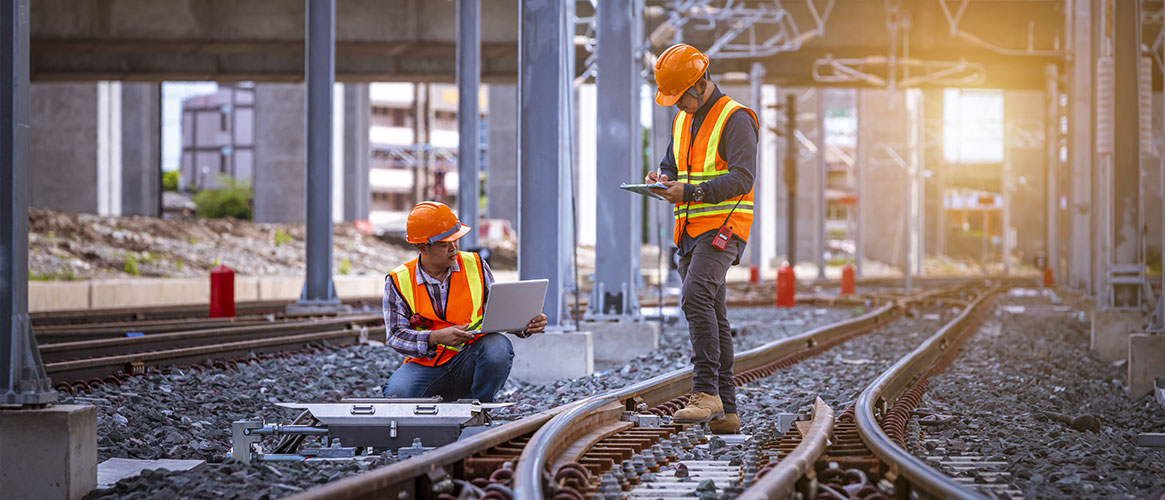The passenger and freight railroad industry has a long history of hard work, long hours, and strict timelines. Railroad worker injuries and fatalities have dropped over time, but they still occur at higher rates than many other industries.
Track work and rail yard work are the most dangerous in the industry with the highest fatality rates. Workers can get struck by trains when working on active tracks, there is miscommunication with control centers and operators, and/or limited line of sight. Plan maintenance work and limit it to inactive tracks. For routine and emergency repairs, communicate with the yard, controller, and operators about where and when you work. Use switch controllers and spotters as warning systems.
Caught/crush injuries are hazards during coupling, switching, operating doors and hatches, and loading cars. Wear sturdy work gloves for these tasks. Check railcar doors for damage and stability. Open doors slowly to ensure that the load has not shifted. Do not walk between cars unless they are secured (apply brakes, chock and block, derail, or use bumper blocks). If winches or capstans are being used to move cars, don’t stand between them.
Keep the rail yard clear of debris and garbage to prevent slips, trips, and falls. Clean and maintain walking surfaces of stations and trains. Place guards and warning signs around elevated openings of trains and platforms. Never jump from railcars; the impact of hitting the ground can cause strains and sprains. Wear protective footwear with a heel and non-slip sole.
Railroad work is strenuous. It involves 24-hour, outdoor work all year. Maintain your level of fitness to adapt to changing seasons, your work schedule, and stress. Follow guidelines for hours of service rest. Eat high-energy foods, drink plenty of fluids, and exercise to maintain energy and alertness on shift work. Use good lifting techniques and keep a straight back when moving cars or freight to avoid strains and sprains. Never use drugs or alcohol before or during a work shift. Fatigue and lack of attention can cause serious errors, leading to injury or a fatal mistake.
Railcars and tankers carry hazardous materials and wastes that pose spill and fire hazards. Be prepared for emergencies; know what materials are being transported and stored in the yard and cars. Safety data sheets (SDS) provide information on material properties and emergency procedures for firefighting and spill cleanup. Get training on chemical safety, emergency response, and emergency equipment you may need to use.
Railway security such as vandalism, workplace violence, and terrorism are concerns due to remote locations and 24-hour work in all types of neighborhoods. Restrict access and maintain adequate lighting in rail yards. Worker identification (badge) systems help identify authorized workers. Secure trains and control centers from the inside to prevent intruders and trespassing. Use radios and cell phones to communicate during operations and in case of emergency.
To work safely, know your safety program and how to report hazards. Analyze your work hazards and outline training, procedures, equipment, and protective gear for safety. If multiple users or contractors share the rail system, coordinate safety programs.
